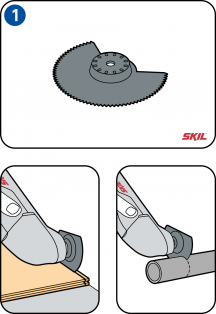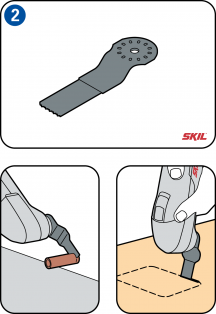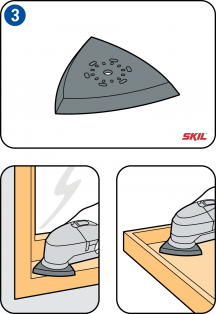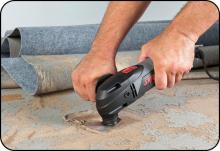-
Which attachment to use for the job?
Numerous multi-tool attachments are available on the market, and the most common ones are shown here. -
1) Universal segment saw blade:
This saw blade is intended to cut wood, plastic and non-ferrous metals. By making separating and plunge cuts, multi-tools are ideal for sawing close to edges, in corners and in hard-to-reach areas. Just a few examples are carefully removing damaged tiles, adjusting floor panels and shortening pipes, although the possibilities are almost unlimited. -
2) Plunge saw blade:
This saw blade is available in several different sizes, and like the universal blade it can also be used for separating and plunge cutting in wood, plastic and non-ferrous metals. However the shape is different, which makes this blade ideal for deeper plunge cuts. Some of the jobs for which this blade can be used are installing door hinges and ventilation grids, cutting plasterboard, making slots for installing electricity conduits and shortening pipes. This blade also has almost unlimited cutting possibilities. -
3) Base plate for sanding:
This sanding attachment is ideally suited for sanding surfaces close to edges, in corners and in other hard to reach areas. Depending on the chosen sanding sheet, a few examples are sanding paint, wood, plaster and varnish. -
4) Others:
Many other attachments are available on the market. For example the Bosch accessories range includes numerous attachments that fit both the Bosch Multi Tool and the SKIL Multi-Tasker. Examples are attachments for removing carpet, tile adhesive, concrete residues, unhardened nails, staples and smaller profiles.



